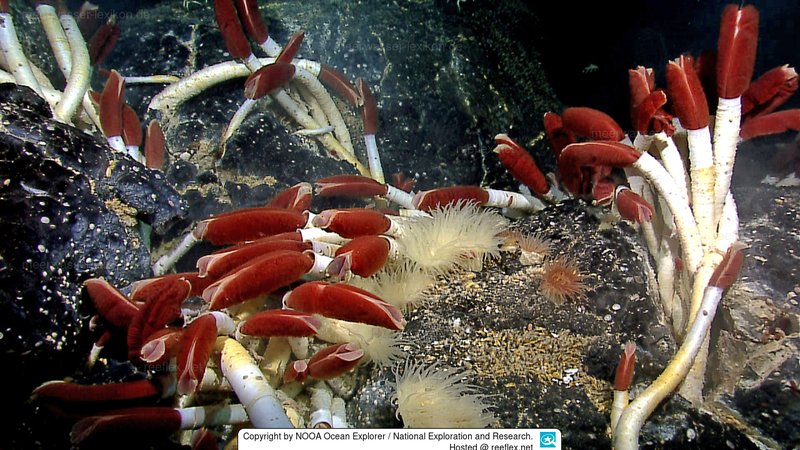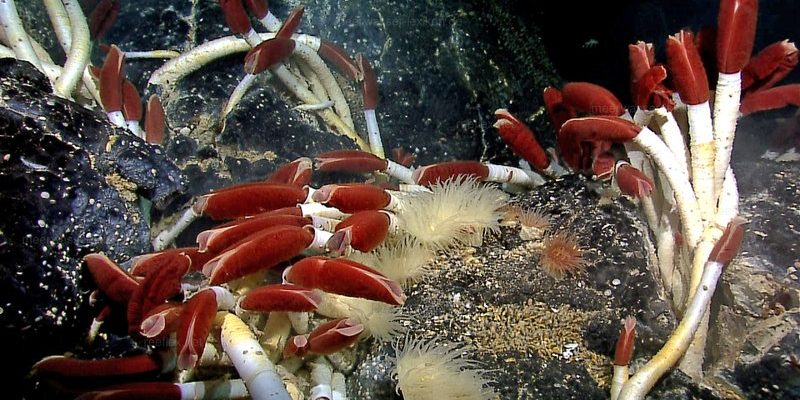
On the surface, you might think that these fascinating creatures would have few enemies. However, when you take a closer look, it’s clear that they live in a perilous world. From natural predators to human-induced threats, the survival of *Riftia pachyptila* populations is far from guaranteed. Understanding the various factors that threaten these organisms can help us appreciate the delicate balance of their ecosystem and highlight the importance of conservation efforts.
Understanding *Riftia Pachyptila* and Their Habitat
*Riftia pachyptila* is part of a captivating family of tube worms found near hydrothermal vents in the ocean floor. These vents release superheated water rich in minerals, creating a unique habitat where life flourishes despite the harsh conditions. The worms can grow up to 2.5 meters long and have striking red plumes that they use to filter nutrients from the water.
What makes them truly special is their symbiotic relationship with bacteria. These bacteria live within the worms and convert the chemicals from vent fluids into energy through a process known as chemosynthesis. In essence, the worms act like mini-powerhouses, turning toxic substances into nutrients. You might think of them as the “solar panels” of the deep sea—except instead of sunlight, they harness the energy from the Earth itself.
Unfortunately, this incredible habitat is not without its challenges. Predators lurking nearby and various environmental threats can disrupt the delicate balance of these ecosystems, threatening the future of the *Riftia pachyptila* populations.
Natural Predators of *Riftia Pachyptila*
While *Riftia pachyptila* might seem well-protected in their rocky homes, they are not immune to the hungry mouths of predators. Several species are known to feast on these tube worms, creating a natural threat to their populations.
One of the prime suspects is the *Anthomastus* sea star. These creatures have a voracious appetite for *Riftia pachyptila*. Their unique feeding methods allow them to pry open the tube worms’ protective shells, giving them access to their soft, nutrient-rich interiors. Additionally, specific species of fish and crustaceans, like certain types of snails, might also target these worms when food is scarce.
Predation can significantly impact population numbers, especially in areas where these predators are abundant. When you think about it, the complex dance of predator and prey is a natural part of the ecosystem. Yet, sometimes, even small shifts in population dynamics can have far-reaching effects.
Environmental Changes Impacting *Riftia Pachyptila*
Apart from predators, environmental changes pose a massive threat to *Riftia pachyptila* populations. Hydrothermal vents are incredibly sensitive to shifts in their environment. Factors like water temperature, pressure, and chemical composition can all affect the delicate balance that supports these tube worms.
For instance, climate change is altering ocean temperatures and chemistry. Increased ocean temperatures can disrupt the habitats where *Riftia pachyptila* thrives, making it harder for them to obtain the nutrients they rely on. Additionally, warmer waters can lead to decreased oxygen levels, which can further impact their survival.
Another significant concern is pollution. Oil spills, plastic waste, and heavy metal contamination can seep into these fragile ecosystems, posing a significant risk to both *Riftia pachyptila* and the bacteria they rely on. Imagine a well-balanced recipe suddenly getting a dash of poison—it’s a recipe for disaster.
Human Activities and Their Impact
Humans are a significant factor in the decline of *Riftia pachyptila*. Activities like deep-sea mining, oil drilling, and excessive fishing practices disturb these hydrothermal vent ecosystems.
Deep-sea mining, for instance, can physically destroy the habitats of these tube worms, making it nearly impossible for them to survive. Large machinery tears through the ocean floor, leaving a trail of disruption that can take decades, if not centuries, to recover.
Moreover, the extraction of natural resources often leads to sedimentation, which can smother the worms and their habitat. When sediment settles on the ocean floor, it blocks light and nutrients, effectively creating a dead zone for the organisms living there.
The unfortunate reality is that many of these activities are done with little regard for the unique ecosystems at risk. With increasing demand for resources, the pressure on these rare habitats only continues to grow.
Measures to Protect *Riftia Pachyptila*
So, what can be done to protect *Riftia pachyptila* and their unique environment? For starters, awareness and education are crucial. The more we understand about the significance of these ecosystems, the more likely we are to advocate for their protection.
Efforts are underway to establish marine protected areas around hydrothermal vents. These zones would restrict harmful activities like mining and fishing, allowing *Riftia pachyptila* and other organisms to thrive without the constant threat of human intervention. However, enforcement is key. Without proper regulations and monitoring, these protected areas might not provide the sanctuary they need.
Another potential solution involves sustainable practices. Encouraging industries to adopt eco-friendly approaches can lessen the harmful impact on marine habitats. For instance, minimizing pollution and responsibly managing resources can help create a healthier environment for tube worms like *Riftia pachyptila*. After all, healthy ecosystems mean healthier populations.
*Riftia pachyptila* serves as a reminder of the incredible diversity and complexity of life in our oceans. Yet, as we’ve explored, these tube worms face many challenges—from natural predators to human-induced threats. It’s essential to recognize the importance of conservation efforts in protecting these unique ecosystems.
As we learn more about the delicate balance of life beneath the waves, we must commit to safeguarding it for future generations. By raising awareness, supporting sustainable practices, and advocating for marine protection, we can ensure that *Riftia pachyptila* and their fascinating world continue to thrive. Let’s cherish our oceans and the remarkable life forms they harbor, because, in this vast, blue universe, every little creature plays a vital role.

